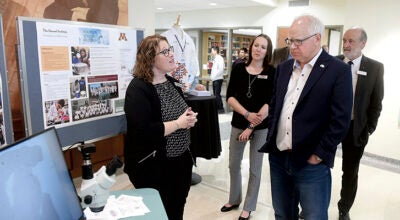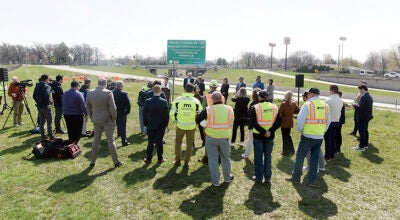Emerald ash borer could crawl into Austin
Published 7:28 am Tuesday, March 9, 2010
Often just one-third of an inch long, the emerald ash borer might be the biggest little threat to ash trees across the state — and the Austin parks and recreation department wants to be ready.
The shiny green beetles, which ravage ash trees by tunneling under the bark, only first turned up in Minnesota last spring in St. Paul. But the news late last month that the bug had hopped over to Minneapolis set off some alarm bells, including with Austin parks and recreation director Kim Underwood.
Underwood said she is just starting a public awareness campaign about the beetle, but she already met informally with city council earlier this month to discuss the possible threat.
“I think it is a concern that everybody should have,” Underwood said. “I would be really surprised if it didn’t get (to Austin).”
So far, the emerald ash borer, which is native to Asia, has been spotted in 13 states and in Canada. The first North American spotting came in Michigan in 2002.
If the beetle does make it to Austin as Underwood expects, the parks and recreation director wants officials and residents ready to respond.
To that end, her first push is to get the city to update a shade tree disease ordinance. The current ordinance, which allows for the removal and destruction of affected trees, only covers Oak Wilt and Dutch Elm Disease. Underwood wants to see the emerald ash borer join this list.
In addition, the parks and recreation director wants to see all the city’s trees get inventoried, a goal her department has had for some time. By inventorying the trees, park crews will more easily be able to identify where ash trees are — and where the beetle could be. Some funds from the Hormel Foundation are in place to start this project.
But beyond these specific plans, Underwood also simply wants people to be more aware of what the emerald ash borer is and what it can do. She said this information can help slow the bug because eradication efforts start sooner if identification happens sooner.
“Obviously, we want (people) to contact the proper authorities,” Underwood said. “I want people to be aware of (emerald ash borer).”
At the state level, public awareness efforts have included a push by the University of Minnesota to train volunteer “First Detectors” to detect the emerald ash borer. So far, 200 such First Detectors have been trained and Jeff Hahn, a university extension entomologist, said more training will occur in coming months.
By having these volunteer bug detectors in place, Hahn said citizens across Minnesota have a good first place to go if an infestation is suspected.
“They are contacts for the general public,” Hahn said.
The researcher said First Detectors are trained to quickly spot and identify the emerald ash borer. But after that, they turn the job over to the Minnesota Department of Agriculture, which has spearheaded the fight against the beetle.
Hahn said a couple of bugs won’t kill a tree, but a large swarm of emerald ash borers can take down an ash in one to four years. And all types of ash are susceptible.
“It doesn’t matter how big or small,” Hahn added.
The problem is especially acute in Minnesota, Hahn said, because of the state’s high ash tree concentration. The University of Minnesota estimates that there are 870 million such trees across the state.
Because fighting the bug means cutting down these trees — which was the case in St. Paul and in the Minneapolis park where emerald ash borers were recently found — Hahn said putting effort into prevention is vital.
One key is for people to stop moving firewood from one site to another, the entomologist said. The beetle likely entered the U.S. via solid wood packing material carried in cargo ships, and moving firewood can likewise help the bug move quickly.
Hahn said insecticides are also available for preventative use. Underwood said local private entities may want to look into this, but she noted that a public spraying effort may be too costly.
Both Hahn and Underwood said regardless of how quick the emerald ash borer spreads, the threat is very real. However, Hahn said people often don’t think this way until the bug is right in their city.
“There is nothing like it being in your backyard before it becomes more immediate,” he said.





